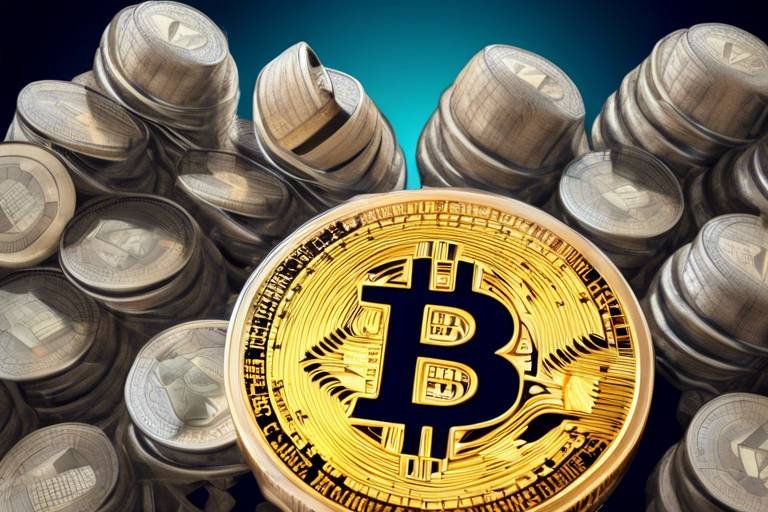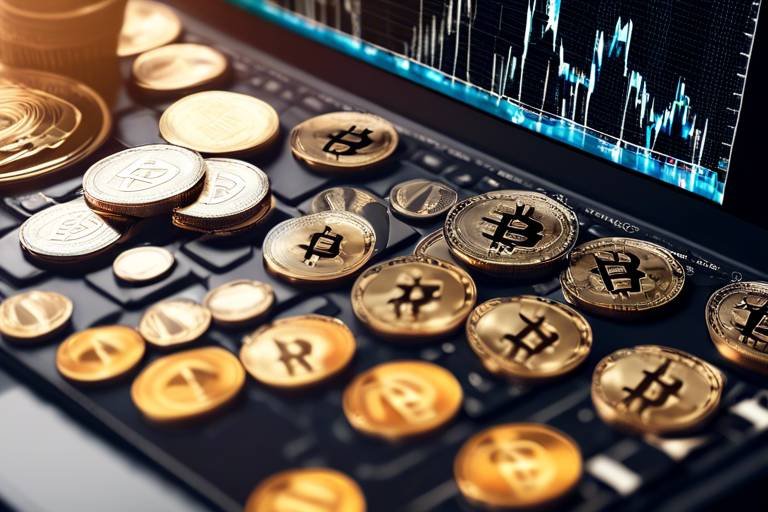Crypto and Inflation - A Hedge Against Economic Downturns?
In recent years, the world has witnessed a surge in interest towards cryptocurrency, with many investors questioning whether these digital assets can act as a reliable hedge against inflation and economic downturns. As traditional markets fluctuate and inflation rates rise, the allure of cryptocurrency becomes even more pronounced. But can it truly serve as a safeguard for your investments during turbulent times? This article delves into the intricate relationship between cryptocurrency and inflation, exploring the potential of digital assets to protect value when the economy seems to be on a shaky ground.
To grasp this concept fully, it's essential to understand the fundamentals of both cryptocurrency and inflation. Cryptocurrency, a digital or virtual form of currency, operates on blockchain technology, which ensures transparency and security. Unlike traditional currencies issued by governments, cryptocurrencies are decentralized, meaning they aren't subject to direct control by any central authority. This unique feature raises an intriguing question: can cryptocurrencies, with their inherent characteristics, provide a buffer against the diminishing purchasing power that inflation often brings?
Inflation, at its core, refers to the rate at which the general level of prices for goods and services rises, leading to a decrease in the purchasing power of money. As inflation escalates, the value of your hard-earned cash can dwindle, making it crucial to seek alternative investment avenues. The relationship between inflation and economic conditions is complex, with various factors contributing to its rise. Understanding these dynamics is vital for investors looking to navigate this landscape effectively.
In the following sections, we will explore the different types of inflation, such as demand-pull and cost-push, and how they can influence economic stability. Demand-pull inflation occurs when the demand for goods and services exceeds supply, often leading to increased prices. On the other hand, cost-push inflation arises from rising production costs, which can be detrimental to businesses and consumers alike. By examining these types of inflation, we can better appreciate the economic environment in which cryptocurrencies are being considered as a potential hedge.
As we move further into the discussion, we will analyze how cryptocurrencies have performed during past inflationary periods and economic downturns. Historical data, case studies, and market trends will provide valuable insights into the effectiveness of digital assets as a protective measure against inflation. Additionally, understanding investor sentiment plays a crucial role in evaluating crypto's position as a hedge. The perceptions and attitudes of investors can significantly influence the adoption and investment strategies surrounding cryptocurrencies.
Ultimately, the question remains: can cryptocurrencies truly serve as a hedge against inflation? As we explore this topic, we invite you to consider the potential benefits and risks associated with investing in digital assets. The landscape of cryptocurrency is continually evolving, and understanding its role in the broader economic context is essential for making informed investment decisions. Stay tuned as we dive deeper into the intricacies of this fascinating relationship.
- What is cryptocurrency? Cryptocurrency is a digital or virtual currency that uses cryptography for security and operates on a technology called blockchain.
- How does inflation affect my investments? Inflation erodes purchasing power, meaning the same amount of money will buy fewer goods and services over time, which can impact the value of traditional investments.
- Can cryptocurrencies protect against inflation? Some investors believe that cryptocurrencies, due to their limited supply and decentralized nature, may offer a hedge against inflation, but this is still a topic of ongoing debate.
- What are the risks of investing in cryptocurrencies? Cryptocurrencies are highly volatile and can experience significant price swings, which can lead to substantial losses for investors.
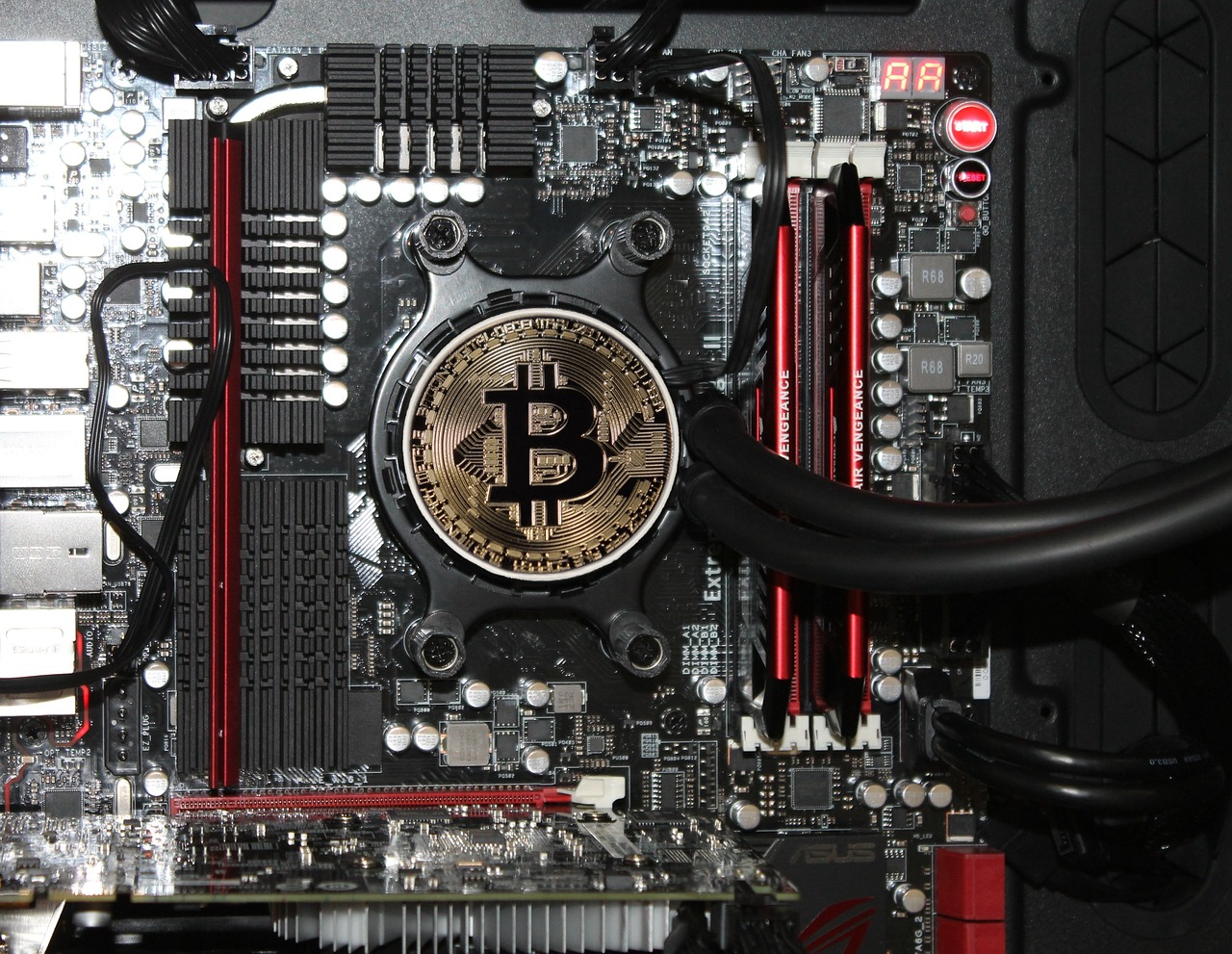
The Basics of Cryptocurrency
This article explores the relationship between cryptocurrency and inflation, examining whether digital assets can serve as a reliable hedge during economic downturns and the implications for investors and the market.
Understanding cryptocurrency is crucial for anyone looking to navigate the modern financial landscape. At its core, cryptocurrency is a form of digital or virtual currency that uses cryptography for security. Unlike traditional currencies issued by governments, cryptocurrencies operate on decentralized networks based on blockchain technology. This means that transactions are recorded across multiple computers, making them transparent and secure.
One of the most significant differences between cryptocurrencies and traditional currencies lies in their decentralization. Traditional currencies, like the US Dollar or the Euro, are regulated and controlled by central banks. In contrast, cryptocurrencies are typically not controlled by any single entity, which can offer a sense of freedom and autonomy to users. This decentralization also means that cryptocurrencies can be less susceptible to government manipulation and policy changes.
To further understand the potential of cryptocurrencies as a hedge against inflation, it's essential to highlight some of their unique characteristics:
- Limited Supply: Many cryptocurrencies, like Bitcoin, have a capped supply, meaning there will only ever be a finite number of coins created. This scarcity can potentially protect against inflationary pressures that devalue traditional currencies.
- Borderless Transactions: Cryptocurrencies can be sent and received anywhere in the world, allowing for greater flexibility in transactions and investments.
- Decentralized Nature: The lack of central authority can make cryptocurrencies less vulnerable to inflation caused by poor monetary policy.
Moreover, the technology behind cryptocurrencies, known as blockchain, is a distributed ledger that offers transparency and security. Each transaction is recorded in a "block," which is then linked to previous blocks, forming a "chain." This structure not only enhances security but also helps in preventing fraud and double-spending, which are significant issues in traditional finance.
As we delve deeper into the relationship between cryptocurrencies and inflation, it's essential to recognize the growing interest and adoption of these digital assets. Investors are increasingly viewing cryptocurrencies not just as speculative assets but as potential stores of value that can withstand economic downturns. The idea is that as inflation rises and the purchasing power of fiat currencies declines, cryptocurrencies could provide a viable alternative for preserving wealth.
In summary, the basics of cryptocurrency encompass its digital nature, decentralized framework, and the underlying blockchain technology that ensures security and transparency. These features make cryptocurrencies an intriguing option for investors, especially in times of economic uncertainty. As we continue this exploration, we will examine how these digital assets perform in inflationary environments and what that means for the future of investing.
Q: What is cryptocurrency?
A: Cryptocurrency is a digital or virtual currency that uses cryptography for security and operates on a decentralized network called blockchain.
Q: How does cryptocurrency differ from traditional currency?
A: Unlike traditional currencies, which are regulated by central banks, cryptocurrencies are decentralized and not controlled by any single entity.
Q: Can cryptocurrencies protect against inflation?
A: Some investors believe that cryptocurrencies, especially those with limited supply, can serve as a hedge against inflation by preserving value when fiat currencies depreciate.
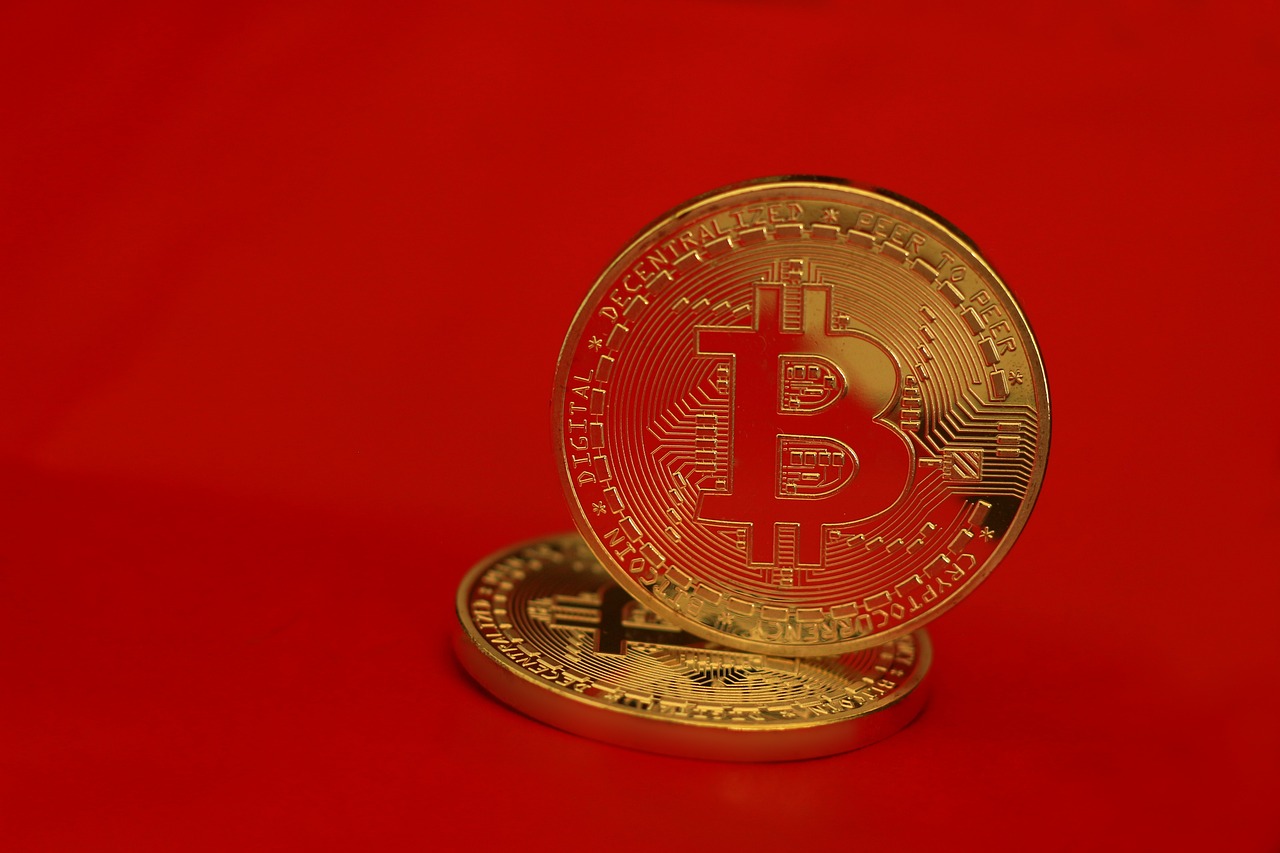
Inflation Explained
Inflation is a term that often gets thrown around in economic discussions, but what does it really mean? At its core, inflation refers to the rate at which the general level of prices for goods and services rises, leading to a decrease in purchasing power. Imagine you could buy a candy bar for a dollar last year, but this year, it costs you $1.10. That 10-cent increase is a direct reflection of inflation at work. When inflation rises, it effectively means that your money is worth less than it was before, which can have profound implications for your wallet and the economy as a whole.
So, what causes inflation? There are several factors, but they generally fall into two main categories: demand-pull inflation and cost-push inflation. Understanding these causes is essential for grasping how inflation impacts our daily lives and investment strategies. For instance, when people have more disposable income, they tend to spend more, which can drive up demand for goods and services. If the supply doesn't keep up with this increased demand, prices begin to rise. Conversely, if the cost of raw materials goes up, businesses may pass those costs onto consumers, resulting in higher prices across the board.
In essence, inflation can be thought of as the economy's way of adjusting to various pressures, be they from consumer demand or production costs. It's a delicate balancing act, and when inflation gets out of control, it can lead to economic instability, impacting everything from interest rates to employment rates. To illustrate this further, let's break down the two primary types of inflation:
Understanding the different types of inflation can provide valuable insights into how they affect economic conditions and consumer behavior. Here’s a closer look:
| Type of Inflation | Description |
|---|---|
| Demand-Pull Inflation | Occurs when demand for goods and services exceeds supply, causing prices to rise. |
| Cost-Push Inflation | Happens when production costs increase, leading businesses to raise prices to maintain profit margins. |
By understanding these types, we can better appreciate how inflation affects our investments, particularly in the realm of cryptocurrency. As we dive deeper into this topic, it becomes clear that the relationship between inflation and economic downturns is complex, and recognizing these nuances is key for any investor.
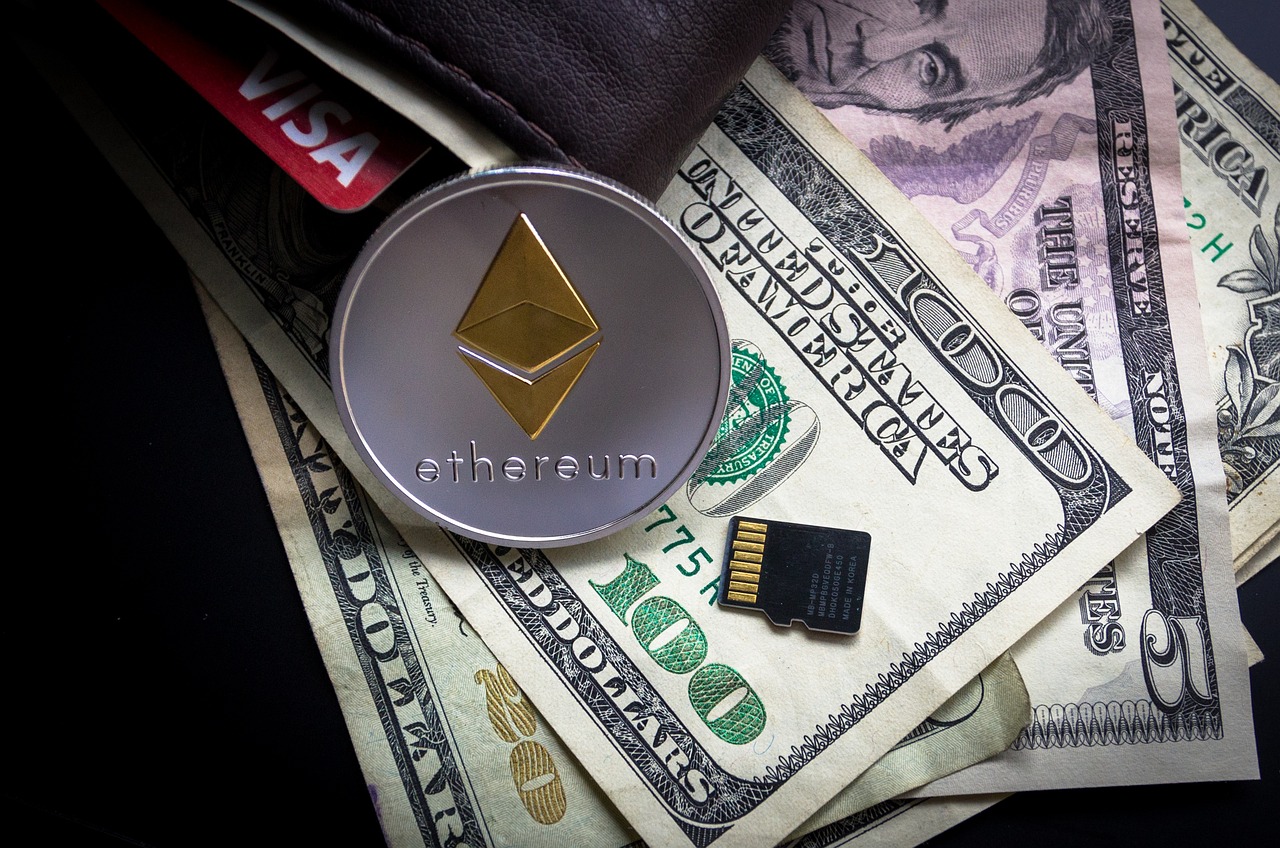
Types of Inflation
When it comes to understanding inflation, it's not just a single entity; instead, it manifests in various forms, each with its own causes and consequences. By recognizing the different types of inflation, we can better grasp how they affect our economies and, consequently, our investments. The two primary types of inflation are demand-pull inflation and cost-push inflation, and each plays a significant role in shaping economic landscapes.
Demand-pull inflation occurs when the demand for goods and services exceeds their supply. Think of it as a crowded concert where everyone wants to get in, but there are only a limited number of tickets. As more people compete to buy those tickets, prices inevitably rise. This type of inflation can be fueled by various factors, including increased consumer spending, government expenditure, or even a booming economy that encourages businesses to invest heavily. When demand outstrips supply, businesses may struggle to keep up, leading to higher prices across the board.
On the flip side, we have cost-push inflation, which arises when the costs of production increase, forcing businesses to pass those costs onto consumers in the form of higher prices. Imagine a bakery that suddenly faces a surge in flour prices. To maintain profit margins, the bakery may raise the price of its bread. Cost-push inflation can stem from a variety of sources, including rising wages, increased raw material costs, or supply chain disruptions. In today's interconnected world, even a natural disaster in one part of the globe can lead to cost-push inflation elsewhere, as it affects the availability and price of essential goods.
Understanding these types of inflation is crucial for investors and consumers alike. They can influence everything from interest rates to investment strategies. For instance, during periods of demand-pull inflation, central banks may increase interest rates to cool off an overheating economy. Conversely, during cost-push inflation, the response might be more complex, as raising interest rates could further stifle growth. Thus, being aware of these dynamics is essential for making informed financial decisions.
To summarize, both demand-pull and cost-push inflation have distinct characteristics and implications for the economy. Recognizing the differences between them can help investors navigate the often turbulent waters of economic change. As we continue to explore the relationship between cryptocurrency and inflation, understanding these types will provide a solid foundation for evaluating how digital assets might serve as a hedge against economic downturns.
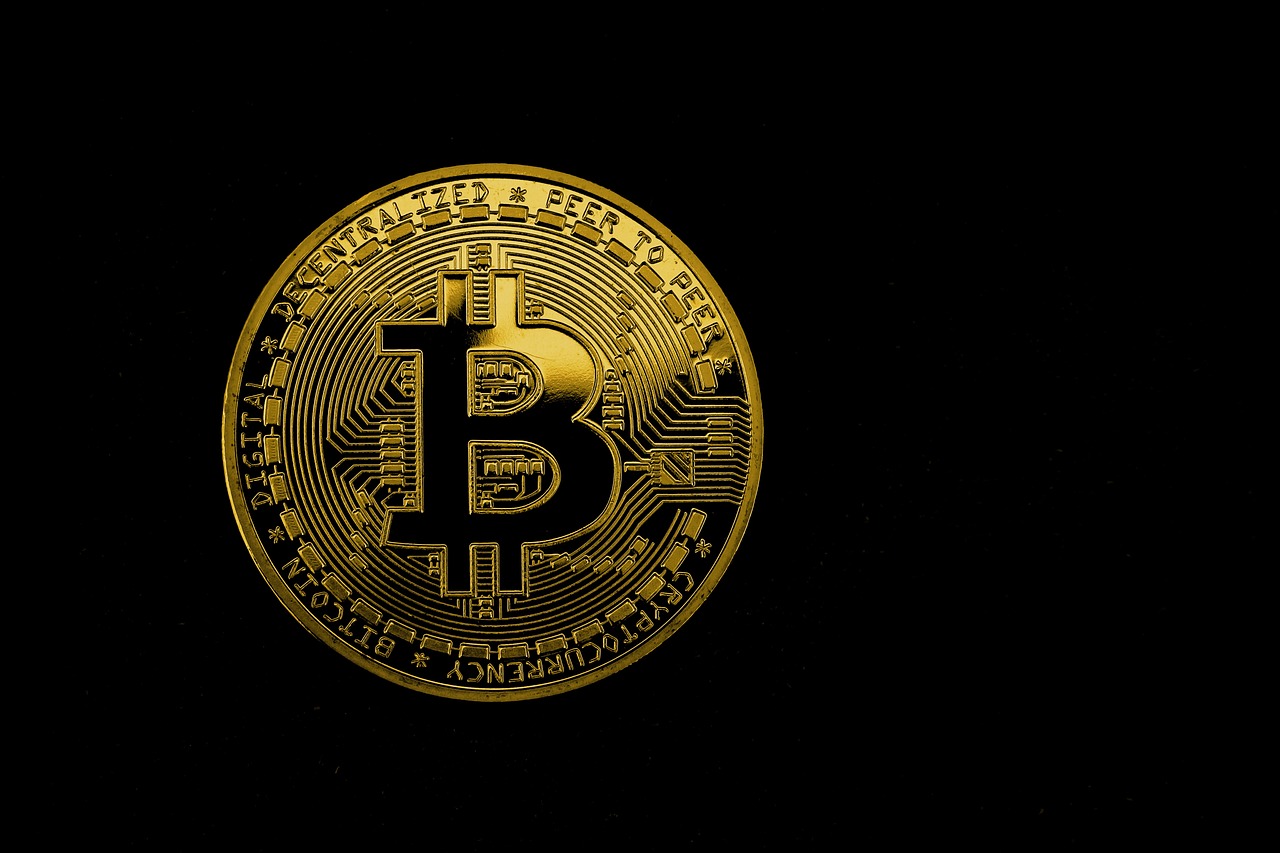
Demand-Pull Inflation
Demand-pull inflation is a fascinating economic phenomenon that occurs when the demand for goods and services exceeds their supply. Imagine a popular concert where everyone wants a ticket, but there are only a limited number available. As the demand skyrockets, ticket prices surge, reflecting how consumers are willing to pay more to secure their spot. This scenario encapsulates the essence of demand-pull inflation, where the heightened consumer demand drives prices upward, leading to an overall increase in the cost of living.
In a thriving economy, when consumers feel optimistic about their financial prospects, they tend to spend more. This increased spending can lead to higher demand for products, which, if not matched by an increase in supply, results in inflation. For instance, during times of economic growth, businesses may struggle to keep up with the surge in demand, causing them to raise prices. This is particularly noticeable in sectors like housing, where a booming job market can lead to a rush for homes, pushing property prices up.
Several factors can contribute to demand-pull inflation, including:
- Increased consumer confidence: When people feel secure in their jobs and finances, they are more likely to spend money, boosting demand.
- Government spending: When governments invest heavily in infrastructure or social programs, it can inject significant funds into the economy, further driving demand.
- Low interest rates: Lower borrowing costs encourage consumers to take loans for big-ticket items, such as cars and homes, which can amplify demand.
However, it's not all sunshine and rainbows. While demand-pull inflation can indicate a healthy economy, it can also lead to economic instability. If prices rise too quickly, it can erode purchasing power, making it difficult for consumers to afford everyday essentials. This creates a delicate balancing act for policymakers, who must navigate the fine line between fostering economic growth and controlling inflation.
In summary, demand-pull inflation is a critical concept that highlights the relationship between consumer demand and pricing. Understanding this dynamic is essential for investors, particularly those exploring the role of cryptocurrencies as a hedge against inflation. As demand for digital assets grows, the principles of demand-pull inflation may also apply, influencing how cryptocurrencies are valued in an ever-changing economic landscape.

Cost-Push Inflation
Cost-push inflation is a phenomenon that occurs when the overall prices of goods and services rise due to increased production costs. Imagine a factory that produces your favorite sneakers. If the price of raw materials, like rubber and cotton, suddenly skyrockets, the factory owner faces a dilemma. To maintain profit margins, they must either absorb the costs or pass them on to consumers. Often, they choose the latter, leading to higher prices for the sneakers you love.
This type of inflation can stem from various sources, including increased wages, supply chain disruptions, or rising costs of imported goods. For instance, if a country faces a natural disaster that affects oil production, the costs of transportation and manufacturing can escalate dramatically. As a result, consumers might find themselves paying more for everything from gas to groceries. This ripple effect can create a significant burden on households, squeezing budgets and reducing overall spending power.
One of the critical aspects of cost-push inflation is its potential to create a vicious cycle. When prices rise, consumers often cut back on spending, which can lead to reduced demand for products and services. Businesses, in turn, may respond by laying off workers or halting investments, further slowing economic growth. This cycle can lead to a stagnating economy, where inflation persists even in the face of declining demand. The complexity of cost-push inflation makes it a crucial aspect for economists and policymakers to monitor, as it can have severe implications for economic stability.
To illustrate the impacts of cost-push inflation, consider the following table that outlines some common causes and their effects:
| Cause | Effect |
|---|---|
| Increased wages | Higher production costs lead to increased prices for consumers. |
| Supply chain disruptions | Scarcity of goods results in higher prices due to increased demand. |
| Rising costs of raw materials | Manufacturers pass on costs to consumers, leading to inflation. |
In summary, cost-push inflation is a critical economic concept that highlights the interconnectedness of production costs and consumer prices. Understanding this relationship is essential for anyone looking to navigate the complexities of the economy, especially in times of uncertainty. As we continue to explore the implications of inflation on cryptocurrencies, recognizing the nuances of cost-push inflation will provide valuable context for investors and consumers alike.
- What is cost-push inflation? Cost-push inflation occurs when the prices of goods and services rise due to increased production costs.
- What causes cost-push inflation? It can be caused by factors like rising wages, supply chain disruptions, and increased costs of raw materials.
- How does cost-push inflation affect consumers? It leads to higher prices for goods and services, which can reduce purchasing power and overall consumer spending.
- Can cost-push inflation lead to economic stagnation? Yes, it can create a cycle of reduced demand and increased prices, potentially leading to a stagnating economy.

Crypto as a Hedge
In the ever-evolving world of finance, the question of whether cryptocurrency can serve as a reliable hedge against inflation is becoming increasingly relevant. As traditional currencies face the pressures of inflation, many investors are turning their attention to digital assets, hoping to find refuge from the economic storm. But what makes cryptocurrencies like Bitcoin and Ethereum appealing in this context? Well, it boils down to a few key characteristics that set them apart from traditional fiat currencies.
First, let's talk about scarcity. Most cryptocurrencies operate on a fixed supply model, meaning there’s a cap on how many coins can ever be created. For instance, Bitcoin has a maximum supply of 21 million coins. This inherent scarcity can create a sense of value preservation, especially when compared to fiat currencies, which governments can print at will. As inflation erodes the purchasing power of dollar bills, the limited supply of cryptocurrencies can potentially act as a safeguard against this decline.
Moreover, the decentralized nature of cryptocurrencies adds another layer of protection. Unlike traditional currencies that are influenced by central banks and government policies, cryptocurrencies operate on a peer-to-peer network. This decentralization means that they are less susceptible to political manipulation or economic mismanagement. In times of economic uncertainty, this independence can be a comforting thought for investors looking to shield their assets from inflationary pressures.
Another fascinating aspect is the global accessibility of cryptocurrencies. With just an internet connection, anyone can buy, sell, or trade digital currencies. This democratization of finance opens up opportunities for individuals in countries experiencing hyperinflation or economic sanctions. For example, in nations like Venezuela or Zimbabwe, where local currencies have dramatically lost value, cryptocurrencies have emerged as a lifeline, allowing citizens to preserve their wealth and transact without relying on their faltering national currencies.
However, it’s essential to recognize that while cryptocurrencies have potential as an inflation hedge, they are not without their risks. The volatility of crypto markets can lead to significant price fluctuations, which might deter some investors. Yet, many enthusiasts argue that this volatility is part of what makes crypto an exciting investment. The key is to approach it with a well-informed strategy and an understanding of market dynamics.
To illustrate the potential of cryptocurrencies as a hedge, let's consider a few statistics:
| Cryptocurrency | Price Growth During Inflationary Periods | Market Cap |
|---|---|---|
| Bitcoin | 300% (2019-2021) | $1 Trillion |
| Ethereum | 500% (2020-2021) | $400 Billion |
As we can see, during recent inflationary periods, cryptocurrencies have shown impressive price growth, capturing the attention of both retail and institutional investors alike. This performance has led many to view them as a viable alternative to traditional inflation hedges like gold.
In conclusion, while cryptocurrencies present a compelling case as a hedge against inflation, it’s essential for investors to conduct thorough research and consider their risk tolerance. The world of crypto is still relatively young, and while it offers unique opportunities, it also comes with inherent risks. Ultimately, understanding the nuances of this digital revolution can help investors make informed decisions about incorporating cryptocurrencies into their portfolios as a protective measure against economic downturns.
- Can cryptocurrencies really protect against inflation? Yes, due to their scarcity and decentralized nature, many view cryptocurrencies as a potential hedge against inflation.
- What are the risks associated with investing in cryptocurrencies? Cryptocurrencies can be highly volatile, and their values can fluctuate dramatically in short periods.
- How do cryptocurrencies compare to traditional inflation hedges like gold? While gold has been a long-standing inflation hedge, cryptocurrencies have shown significant price growth during inflationary periods, attracting investor interest.

Market Trends and Data
The cryptocurrency market is a fascinating landscape that has evolved dramatically over the past decade. As we dive into the market trends and data surrounding cryptocurrencies, it's essential to understand how these digital assets have fared during various economic climates, especially during periods of inflation. Many investors are curious about whether cryptocurrencies can effectively serve as a hedge against inflation, and the data might just hold the answers.
Historically, cryptocurrencies like Bitcoin have shown a tendency to increase in value during inflationary periods. For instance, during the inflation spikes of the early 2020s, many investors turned to Bitcoin as a safeguard against the declining purchasing power of fiat currencies. The allure of a decentralized asset that is not directly controlled by any government or central bank has led many to view cryptocurrencies as a viable alternative to traditional inflation hedges like gold.
To better illustrate this point, let’s take a look at some key data from the past few years:
| Year | Inflation Rate (%) | Bitcoin Price Change (%) |
|---|---|---|
| 2020 | 1.2 | +300 |
| 2021 | 7.0 | +60 |
| 2022 | 8.0 | -70 |
| 2023 | 5.4 | +40 |
This table highlights the relationship between the inflation rate and Bitcoin's price changes over the years. While the correlation isn't perfect, it suggests that when inflation rates rise, there tends to be an initial surge in Bitcoin's value as investors seek refuge from the devaluation of traditional currencies. However, it's crucial to note that this relationship can be influenced by numerous factors, including market sentiment, regulatory news, and technological advancements within the cryptocurrency space.
In addition to Bitcoin, other cryptocurrencies, such as Ethereum and stablecoins, have also garnered attention as potential hedges against inflation. Stablecoins, in particular, are pegged to fiat currencies and provide a sense of stability amidst market volatility. They offer a unique proposition for investors looking to hedge against inflation while still participating in the crypto market.
But how do investors feel about these trends? Investor sentiment plays a pivotal role in shaping the market dynamics of cryptocurrencies. During times of economic uncertainty, many investors flock to digital assets, viewing them as a safe haven. Social media platforms, forums, and news outlets buzz with discussions about the potential of cryptocurrencies to act as a hedge, further driving interest and investment.
Ultimately, while the data suggests that cryptocurrencies can serve as a hedge against inflation, it's essential to approach this market with caution. The volatility inherent in cryptocurrencies means that while they can offer protection against inflation, they can also experience significant downturns. As an investor, it’s crucial to stay informed, conduct thorough research, and consider diversifying your portfolio to mitigate risks.
- Can cryptocurrencies completely protect against inflation? While they can serve as a hedge, the volatility of cryptocurrencies means they are not foolproof.
- What role does investor sentiment play in cryptocurrency prices? Investor sentiment can significantly influence prices, especially during economic uncertainty.
- Are stablecoins a good option for hedging against inflation? Yes, stablecoins can provide stability while allowing investors to participate in the crypto market.
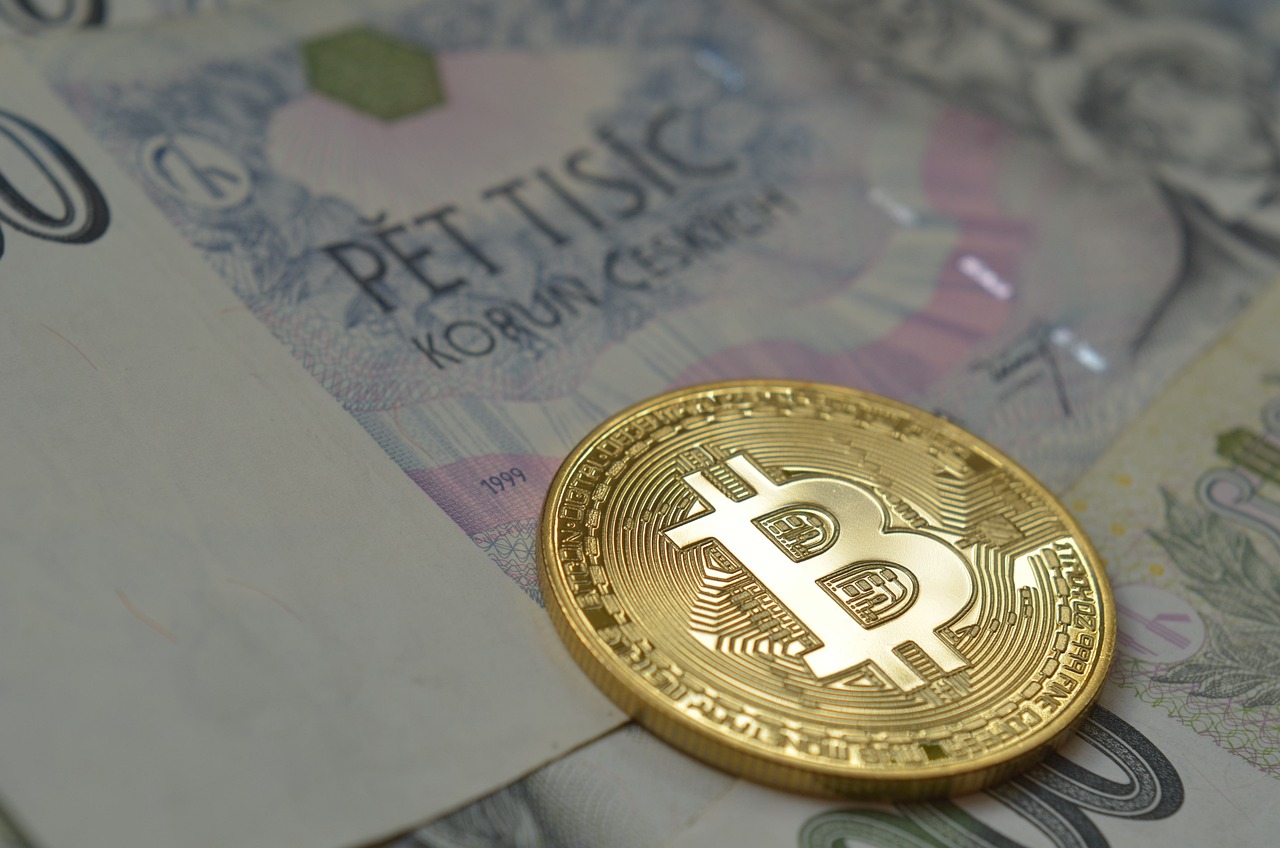
Performance During Inflationary Periods
When we talk about the performance of cryptocurrencies during inflationary periods, it’s essential to look at historical data and real-world examples. Over the past decade, we've witnessed several economic downturns and inflationary cycles, and cryptocurrencies have often been at the forefront of discussions regarding alternative investments. Many investors have turned to digital assets like Bitcoin and Ethereum, hoping to find a safe haven amidst rising prices and economic uncertainty.
For instance, during the inflation spikes of the 1970s, traditional assets like gold gained popularity as a hedge. Fast forward to recent years, and we see a similar trend emerging with cryptocurrencies. In 2020, as the global economy faced unprecedented challenges due to the pandemic, central banks responded with aggressive monetary policies, leading to fears of inflation. Bitcoin, often dubbed "digital gold," saw a significant surge in value, with its price skyrocketing from around $7,000 in January 2020 to over $60,000 by April 2021.
This remarkable performance raises an important question: Can cryptocurrencies consistently act as a reliable hedge against inflation? To explore this, let’s take a closer look at some key factors:
- Supply Limitations: Many cryptocurrencies have a capped supply, like Bitcoin, which is limited to 21 million coins. This scarcity can create upward pressure on prices when demand increases, particularly during inflationary times.
- Decentralization: Unlike fiat currencies, which can be printed at will by governments, cryptocurrencies operate on decentralized networks. This feature can make them less susceptible to the inflationary effects of monetary policy.
- Market Sentiment: The perception of cryptocurrencies as a hedge against inflation is also influenced by investor sentiment. When investors believe that traditional currencies are losing value, they may rush to buy cryptocurrencies, further driving up prices.
However, it’s crucial to note that the performance of cryptocurrencies during inflationary periods is not without volatility. While they can offer significant returns, they also come with risks. For example, during the inflationary pressures of 2021, Bitcoin experienced substantial price fluctuations, which led to mixed feelings among investors about its reliability as a hedge.
To better understand the performance of cryptocurrencies during inflationary periods, let’s take a look at a table summarizing their price movements during notable inflationary events:
| Year | Event | Bitcoin Price (Start of Year) | Bitcoin Price (End of Year) | Inflation Rate (%) |
|---|---|---|---|---|
| 2020 | COVID-19 Pandemic | $7,000 | $29,000 | 1.2% |
| 2021 | Economic Recovery | $29,000 | $46,000 | 5.4% |
| 2022 | Rising Inflation Concerns | $46,000 | $19,000 | 7.0% |
As illustrated in the table, while Bitcoin showed remarkable growth during the initial stages of the pandemic and economic recovery, it also faced significant declines in the face of rising inflation concerns in 2022. This highlights the volatile nature of cryptocurrencies and the importance of conducting thorough research before investing.
In conclusion, while cryptocurrencies have demonstrated potential as a hedge against inflation, their performance can vary dramatically based on market conditions and investor sentiment. As the economic landscape continues to evolve, it will be intriguing to see how digital assets adapt and whether they can maintain their status as a viable alternative during inflationary periods.
Q: Are cryptocurrencies a safe investment during inflation?
A: While some investors view cryptocurrencies as a hedge against inflation, they are also highly volatile. It's essential to conduct thorough research and consider your risk tolerance before investing.
Q: Can Bitcoin replace traditional assets like gold?
A: Bitcoin is often compared to gold due to its scarcity and decentralized nature. However, whether it can fully replace gold as a safe haven asset is still a topic of debate among investors.
Q: How do I start investing in cryptocurrencies?
A: To start investing, you can create an account on a cryptocurrency exchange, fund it, and begin purchasing your desired digital assets. Always remember to do your research and consider security measures.
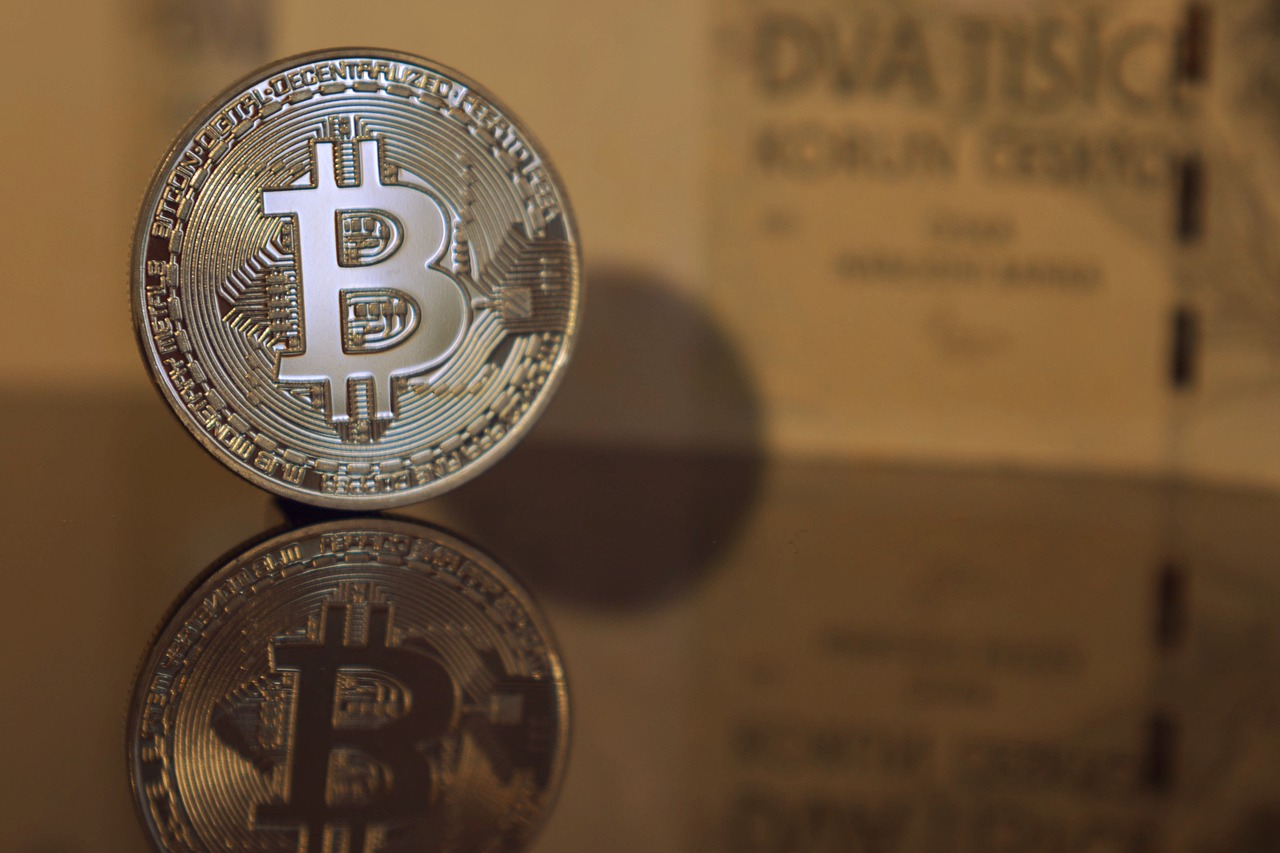
Investor Sentiment
When it comes to the world of cryptocurrency, plays a crucial role in shaping market dynamics. Imagine walking into a crowded room where everyone is buzzing about the latest trends; that’s the cryptocurrency market in a nutshell. The feelings, beliefs, and perceptions of investors can drive prices up or down, often more than any fundamental analysis could predict. This phenomenon is particularly significant during times of economic uncertainty, where the stakes are high and emotions run even higher.
One of the most interesting aspects of investor sentiment in the crypto space is how it can shift rapidly. For instance, news about regulatory changes or technological advancements can spark a wave of optimism or fear among investors. Social media platforms and online forums have become the modern-day town squares where opinions are shared, and trends are born. A single tweet from a prominent figure can lead to a surge in buying or selling activity, underscoring the volatility of this market.
Additionally, the psychological factors at play cannot be overlooked. Many investors are drawn to cryptocurrencies as a hedge against inflation, but this perception can be influenced by external events. For example, if inflation rates spike, investors might flock to crypto as a safe haven, driving up demand and prices. Conversely, if the economy shows signs of recovery, the same investors might sell off their holdings, believing that traditional investments will perform better. This push and pull creates a fluid environment where investor sentiment is constantly evolving.
To better understand how sentiment affects crypto investments, consider the following key points:
- Market Sentiment Indicators: Tools like the Fear and Greed Index can provide insights into whether the market is feeling bullish or bearish.
- Community Influence: Online communities, such as Reddit and Twitter, can amplify sentiments, leading to significant market movements.
- Media Impact: Coverage by mainstream media can sway public perception, either positively or negatively, impacting investor behavior.
Moreover, as cryptocurrencies continue to gain traction, the demographics of investors are shifting. Younger generations, who are often more tech-savvy and open to alternative investments, are increasingly entering the market. Their enthusiasm can create bullish trends, while older generations might be more cautious, viewing crypto as a speculative asset. This generational divide adds another layer to investor sentiment, making it essential for potential investors to stay informed about market trends and shifts.
In summary, investor sentiment in the cryptocurrency market is a powerful force that can dictate price movements and investment strategies. Understanding this sentiment is crucial for anyone looking to navigate the complex waters of crypto investments. As we continue to see economic fluctuations and changes in the global financial landscape, keeping an eye on how investor sentiment evolves will be key to making informed decisions.
- What factors influence investor sentiment in cryptocurrency?
Investor sentiment can be influenced by various factors, including market news, social media trends, economic indicators, and regulatory changes. Emotional reactions to these factors often drive market behavior.
- How can I gauge investor sentiment?
Tools like the Fear and Greed Index, social media analytics, and sentiment analysis platforms can help gauge the mood of the market. Observing trends in trading volume and price movements can also provide insights.
- Is investor sentiment more important than fundamentals?
While fundamentals are crucial for long-term investment strategies, in the short term, investor sentiment can often lead to more significant price movements. Understanding both aspects is vital for a balanced approach.
Frequently Asked Questions
- What is cryptocurrency?
Cryptocurrency is a digital or virtual form of currency that uses cryptography for security. Unlike traditional currencies issued by governments, cryptocurrencies operate on decentralized networks based on blockchain technology, making them resistant to government interference or manipulation.
- How does inflation affect the economy?
Inflation is the rate at which the general level of prices for goods and services rises, leading to a decrease in purchasing power. High inflation can erode savings, increase the cost of living, and create uncertainty in the economy, which can impact consumer spending and investment decisions.
- Can cryptocurrencies act as a hedge against inflation?
Many investors view cryptocurrencies, particularly Bitcoin, as a potential hedge against inflation due to their limited supply and decentralized nature. The idea is that as traditional currencies lose value, cryptocurrencies may retain or even increase their value, offering protection for investors.
- What are the types of inflation?
There are primarily two types of inflation: demand-pull inflation and cost-push inflation. Demand-pull inflation occurs when demand for goods and services exceeds supply, while cost-push inflation happens when the costs of production increase, leading to higher prices.
- How have cryptocurrencies performed during past inflationary periods?
Historical data shows that cryptocurrencies have experienced significant volatility during inflationary periods. While some instances indicate that they can serve as a store of value, others demonstrate that their prices can also be influenced by speculative trading and market sentiment.
- What role does investor sentiment play in cryptocurrency markets?
Investor sentiment is crucial in the cryptocurrency market, as it can heavily influence price movements and adoption rates. Positive sentiment can drive prices up, while negative sentiment can lead to rapid declines. Understanding market psychology is key to navigating these investments.
- Are all cryptocurrencies equally effective as an inflation hedge?
No, not all cryptocurrencies are created equal. While Bitcoin is often touted as a digital gold and a potential hedge against inflation, other cryptocurrencies may not have the same characteristics or market perception. It's essential to research and analyze individual cryptocurrencies before investing.

